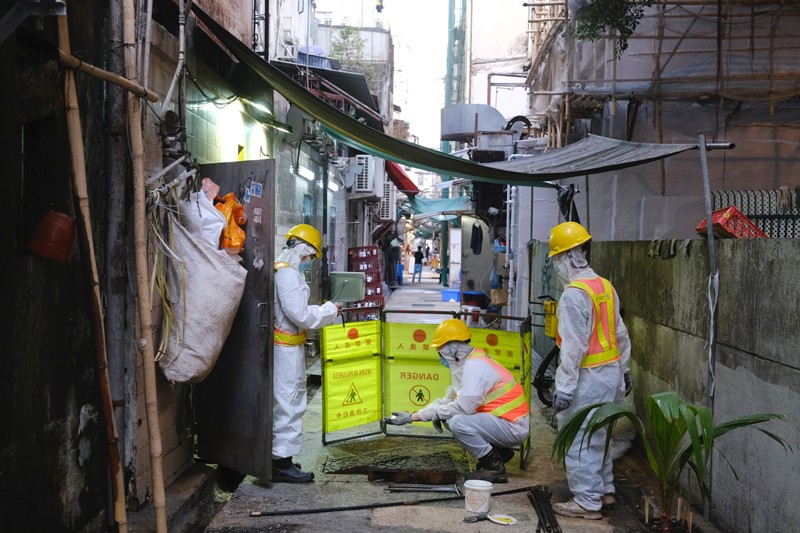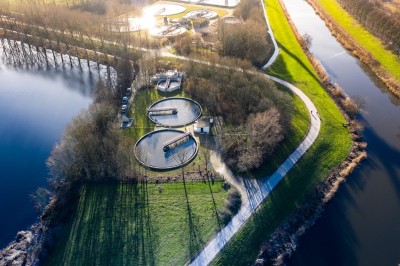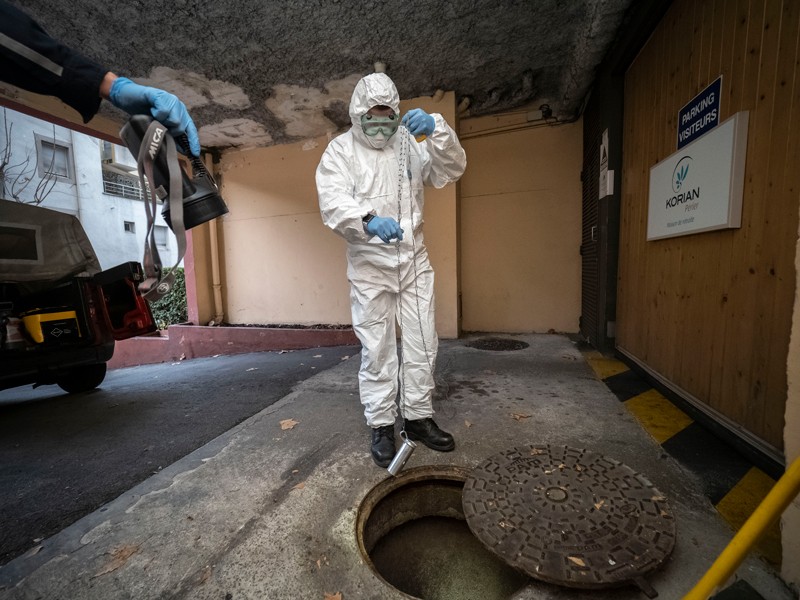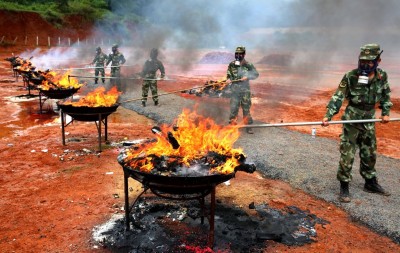From the subarctic community of Yellowknife, Canada, to the subtropical city of Brisbane, Australia, scientists in more than 50 nations are now monitoring the spread of SARS-CoV-2 in sewage. The number of sewage-surveillance programmes tracking COVID-19 has exploded during the past year from a dozen or so research projects to more than 200, following the discovery that whole virus particles and viral fragments are shed in faeces.
The information garnered is helping scientists to track down cases, predict surges, identify where to target testing, and estimate overall numbers of infected people in cities or regions. Although sewage surveillance has been used for several decades to identify polio outbreaks and target immunization programmes, and, more recently, to detect illicit drug use, the pandemic has brought new focus and investment in it as a means of tracking public health.
“There was always an interest in wastewater epidemiology, but now it’s taken flight,” says Ana Maria de Roda Husman, an infectious-diseases researcher at the Netherlands National Institute for Public Health and the Environment in Bilthoven.
Since early 2020, SARS-CoV-2 sewage projects have taken off around the world as wastewater experts pivoted to concentrate on the crisis. But the scale and focus of surveillance programmes varies, depending on how severely countries or communities have been hit by the pandemic.
The number of ways sewage surveillance is being used is dizzying. In the United Arab Emirates, researchers have been testing sewage from commercial aircraft to see whether incoming flights were carrying infected passengers1. Scientists in Hong Kong are monitoring sewage in apartment buildings to find undetected infections, and, in Yellowknife, health officials are testing wastewater to discover which viral variants have made it to their city, just 400 kilometres from the Arctic Circle.
Early-warning system
One common application of such surveillance programmes is as an early-warning system. People who are infected start shedding virus fragments a few days before they show symptoms, and de Roda Husman uses this to predict hospitalization numbers a few days ahead of time.
Other groups are using wastewater to find and suppress outbreaks on a much smaller scale. At the University of California, San Diego, scientists test wastewater from 343 buildings around campus to check for signs of infection. Whenever a sample comes back positive, the university sends targeted messages to encourage students housed in affected buildings to get tested and isolate.
“You just can’t afford to test 10,000 students each day,” says Smruthi Karthikeyan, an environmental engineer at the university. Wastewater tracking provides a cheap and effective alternative, catching up to 85% of cases on campus.
A similar system is in use in Hong Kong, where signs of SARS-CoV-2 in the wastewater of two apartment buildings led to mandatory testing of all residents in January. According to the South China Morning Post, the early-warning system helped health officials to find nine asymptomatic cases.
Scientists in Australia, where COVID-19 cases have remained relatively low throughout the pandemic, are also using wastewater tracking as an early-warning system. In Queensland, wastewater samples are collected across the state and sent to a laboratory in Brisbane for analysis.
But tiny case numbers present Australian researchers with a unique challenge. The typical way for researchers to collect a wastewater sample, explains David McCarthy, a water-quality engineer at Monash University in Melbourne, is to take a bottle on a rope to a section of sewer or a treatment plant and throw it in. But, he says: “We’re looking at maybe one or two COVID cases in a million people. The chances of missing those cases with that technique are really high.”
Passive samplers
Instead, Australian scientists have turned to other methods of sampling. ‘Passive samplers’ use gauze or another absorbent material that can be left in wastewater for up to four days, increasing the likelihood of its picking up virus fragments from that one-in-a-million case.
McCarthy has developed a small, torpedo-shaped passive sampler that can fit into narrow pipes. The blueprint is open-source, and it’s been downloaded in countries including Indonesia, New Zealand and Canada. And interest in the sewage surveillance stretches beyond academic circles to policymakers. “We met with ministers last week, and they were excited,” McCarthy says. “That would never have happened before the pandemic.”
Elsewhere, governments and institutions have adapted pre-existing wastewater-tracking methods to monitor larger trends in the numbers of cases across cities and neighbourhoods. One country leading the charge is the Netherlands.
Samples from wastewater-treatment plants allow researchers there to estimate how many people in large populations are infected with SARS-CoV-2, and government officials use these estimates to make decisions about whether to implement lockdowns and how to channel resources.
Gertjan Medema, a microbiologist at the KWR Water Research Institute in Nieuwegein, the Netherlands, argues that wastewater gives a more accurate overall picture of infections than does diagnostic testing, because it includes asymptomatic individuals. “Not everyone is getting tested, but everyone is going to the bathroom,” he says. “It’s nice to have an objective tool that isn’t dependent on willingness to get tested.”
Challenges for developing countries
However, more than 70% of sewage-surveillance programmes are in high-income countries2, which have poured resources into wastewater epidemiology. Many researchers in the developing world are struggling.
“Testing in India is incredibly challenging as sewage systems are fragmented,” says Sudipti Arora, an environmental scientist at the Dr. B. Lal Institute of Biotechnology in Jaipur, India. Only about one-third of all towns have sewer networks, she says. “Consequently, slums and rural areas remain largely untested.”
In two of the country’s northern states, her team is testing hospital wastewater for SARS-CoV-2, as part of a study into whether specific disinfectants inactivate the virus; as well as samples from wastewater-treatment plants, to determine if the method can be used more widely in India. Despite the challenges facing the method in India, Arora and her team plan to use the experience they have gained with sewage surveillance during the pandemic and apply it to detecting other infectious diseases, as well as antibiotic-resistant bacteria, in wastewater in the future.
Many scientists working in the field say that a rare positive outcome of the pandemic might be that it will normalize the use of wastewater to monitor public health — whether for future pandemics or to track other health indicators, such as hormones that indicate stress or levels of caffeine consumption.
“Wastewater epidemiology was under the radar,” says Karthikeyan. “Now, it’s come to the forefront.”
"world" - Google News
May 10, 2021 at 04:01PM
https://ift.tt/2R8kb3h
The myriad ways sewage surveillance is helping fight COVID around the world - Nature.com
"world" - Google News
https://ift.tt/3d80zBJ
https://ift.tt/2WkdbyX
Bagikan Berita Ini


















0 Response to "The myriad ways sewage surveillance is helping fight COVID around the world - Nature.com"
Post a Comment